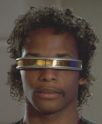|
LtStorm posted:Yeah, the specific thing we know is that the objects in the Kuiper belt move with complexities we don't understand. As far as we are sure of they're all smaller than planets, yet they move as a group like something with a much greater mass is out there. We don't know why yet. It's a bit more complicated then this, there are already predictions for possible orbits for the mystery object, but since they're so far out, the ongoing search for them is slow and tedious. And of course if it turns out there isn't another ice giant out there, utterly pointless. But since we won't know until we try, well.
|
|
|
|

|
| # ? May 24, 2024 22:33 |
|
Libluini posted:I think this thread is convincing me more and more that FTL is possible. I love you buddy but right now, it's your brain. Your brain is violating causality  I totally support continuing to investigate the possibility of FTL, but I have a feeling it's going to involve a lot of thinking outside the reference frame of a rectangular solid.
|
|
|
|
Pretty sure the thing out in the Kuiper belt that we haven't pinpointed yet that's disrupting all the orbits of the comets and whatever is an alien megastructure too.
|
|
|
|
Libluini posted:It's a bit more complicated then this, there are already predictions for possible orbits for the mystery object, but since they're so far out, the ongoing search for them is slow and tedious. And of course if it turns out there isn't another ice giant out there, utterly pointless. But since we won't know until we try, well. Of course it's more complicated, it's a scientific inquiry, I'm being brief!  If it's an ice giant that's planet-sized at least it's probably been hit by a bunch of other objects out there in interesting ways. Actually exploring the Kuiper belt would be a great long-term space project for humanity. As would, I guess, proving whether Oort Cloud is a real thing or not.
|
|
|
|
So what about a racecar going 99% the speed of light on a train going 99% the speed of light like in the webcomic?
|
|
|
|
drilldo squirt posted:So what about a racecar going 99% the speed of light on a train going 99% the speed of light like in the webcomic? What?
|
|
|
|
Hey guys, the Expanse apparently has aired season 4 on Amazon Prime video and everyone should check it out! I haven't paid much close attention to any of the science or anything but one thing DID stand out in episode 2 in light of the thread. The Exo/Xenobiologist lady said something along the lines of "Life doesn't have to form as carbon based life, nothing says it couldn't also happen with any other element like iron." I remember the thread discussing the chemistry of life many pages ago. Minor nitpick, continue on.
|
|
|
|
Raenir Salazar posted:Hey guys, the Expanse apparently has aired season 4 on Amazon Prime video and everyone should check it out! I was one of the ones discussing that! She's right, there could be iron-based life though we might have trouble recognizing it because it would be so alien. That line is almost assuredly in the show because desert varnish could be the pre-biotic version of such life, such as a primordial ooze (be it in tidal pools, undersea cliffs, undersea volcanic vent, or wherever) was our pre-biotic predecessor. LtStorm fucked around with this message at 02:09 on Dec 15, 2019 |
|
|
|
LtStorm posted:I was one of the ones discussing that! She's right, there could be iron-based life though we might have trouble recognizing it because it would be so alien. That line is almost assuredly in the show because desert varnish could be the pre-biotic version of such life, such as a primordial ooze (be it in tidal pools, undersea cliffs, undersea volcanic vent, or wherever) was our pre-biotic predecessor. Turns out I was missing some words/badly paraphrasing. I think she says something like, "any other element could from the basis of life just as easily as carbon" which is what would be wrong because carbon can more easily bond while iron can't as easily I think. I didn't mean to suggest she was wrong per se that it isn't possible; anything is impossible; but not as likely/easily.
|
|
|
|
drilldo squirt posted:So what about a racecar going 99% the speed of light on a train going 99% the speed of light like in the webcomic? They win the race. Probably.
|
|
|
|
drilldo squirt posted:So what about a racecar going 99% the speed of light on a train going 99% the speed of light like in the webcomic?
|
|
|
|
LtStorm posted:I was one of the ones discussing that! She's right, there could be iron-based life though we might have trouble recognizing it because it would be so alien. That line is almost assuredly in the show because desert varnish could be the pre-biotic version of such life, such as a primordial ooze (be it in tidal pools, undersea cliffs, undersea volcanic vent, or wherever) was our pre-biotic predecessor. That's interesting! The only alternate element I've heard people discussing before was Silicon. Something about Silicon being able to almost bind as good as Carbon. And then there was this weird Soviet SF-story I've read many years ago where the Soviet space men meet an alien space ship and the aliens turn out to have a Boron-based biology. And as if that wasn't absurd enough, the Soviet scientists find a way to help their Communist alien comrades, since Boron is claimed to be "inferior" to the mighty Carbon. They develop a way to replace the Boron in the aliens' bodies with Carbon and the alien communists rejoice when they hear the news! The End. No Moral.
|
|
|
|
Antifa Turkeesian posted:Is there a pretty good chance that the predicted super-earth-mass object out in our solar system is really a thing and not an error in reading the data? Gravitational mechanics is pretty well understood, something is out there. Neptune was discovered by a guy literally calculating where it should be, and we have computers and sky surveys now. The fact we haven't seen anything makes the primordial black hole hypothesis interesting.
|
|
|
|
Libluini posted:
|
|
|
|
WAR CRIME GIGOLO posted:Gonna need to toke on this one If you can find it, you should! I've long since forgotten the author, but if you randomly read through all anthologies with SF-short stories from the Soviet Union, you should eventually stumble over it!
|
|
|
|
I have an old 80s book called Texas Truimphant that has Texas as an independent country that fights the soviet union. A massive soviet tank formation rolls up on Texas soil, and the tanks are having a hard time in muddy ground so the commander gets out. He realizes the ground is soaked in oil as he looks up and sees a guy on horseback dressed as the lone ranger on top of a hill. Lone ranger shoots a flaming arrow and blows them all up. It also features space battles between Texas astronauts and cosmonauts and a bunch of other ridiculous Texas fanfiction. It's amazing and part of a trilogy although I haven't been able to find the rest. Not sure what that has to do with the thread but the soviet sci fi convo made me think of it.
|
|
|
|
|
D-Pad posted:I have an old 80s book called Texas Truimphant that has Texas as an independent country that fights the soviet union. A massive soviet tank formation rolls up on Texas soil, and the tanks are having a hard time in muddy ground so the commander gets out. He realizes the ground is soaked in oil as he looks up and sees a guy on horseback dressed as the lone ranger on top of a hill. Lone ranger shoots a flaming arrow and blows them all up. It also features space battles between Texas astronauts and cosmonauts and a bunch of other ridiculous Texas fanfiction. It's amazing and part of a trilogy although I haven't been able to find the rest. Legitimately shocked the archer guy wasn’t dressed in klan robes.
|
|
|
|
I recall someone saying that if Ftl travel turns out to be possible, then the *simplest* explanation is that someone has been running a matrix style simulation to gently caress with us.
|
|
|
|
My favorite Soviet SF novel was Andromeda it's basically Star Trek, but communist. This novel from 1958 describes a society thousands of years in the future, after the inevitable victory of Communism united Humanity and lots of planets have been colonized and alien civilizations have been integrated into the Soviet Federation "The Great Ring". Since the author can't describe anything as less then stellar in this grand Utopian future, the book mostly revolves around flying around in space having scientific adventures. There's also a subplot about trying to contact a civilization too far out from The Ring to be reachable in a spacer's lifetime and how in the end an expedition is send out anyway, since the citizens of the future gladly sacrifice their lives for the greater good. My German translation included great comedy like one of the protagonists of this very serious hard SF novel being described as a vampire hunter as an off-hand remark. Then this fact was never mentioned again.
|
|
|
|
You'd probably like The Dispossessed by Le Guin.
|
|
|
|
D-Pad posted:I have an old 80s book called Texas Truimphant that has Texas as an independent country that fights the soviet union. A massive soviet tank formation rolls up on Texas soil, and the tanks are having a hard time in muddy ground so the commander gets out. He realizes the ground is soaked in oil as he looks up and sees a guy on horseback dressed as the lone ranger on top of a hill. Lone ranger shoots a flaming arrow and blows them all up. It also features space battles between Texas astronauts and cosmonauts and a bunch of other ridiculous Texas fanfiction. It's amazing and part of a trilogy although I haven't been able to find the rest. 
|
|
|
|
I bet that’s the one where Texans dress in klan robes.
|
|
|
|
Raenir Salazar posted:Hey guys, the Expanse apparently has aired season 4 on Amazon Prime video and everyone should check it out! You misheard, she actually compares potassium, carbon, and calcium to arsenic, silicon and iron respectively. Calcium ions are very important in terrestrial biology. Iron chemistry is different than calcium chemistry but the comparison is a lot more plausible than comparing carbon and iron.
|
|
|
|
wow Are the Native Americans supposed to be on the, uh, Texan side in this one?
|
|
|
|
Kesper North posted:wow Utah joins the fray when the 13th tribe turns on the other 12.
|
|
|
|
POP SCIENCE RELATED TO THIS TOPIC! Hey after we talked about crappy op science a few pages ago, I saw this today on good ol' IFLS. Sensationalist Pop Science Reporting posted:
So the actual point of this thought experiment is looking at how we could identify, archaeologically, a civilization that existed millions upon millions of years ago. The answer is there'd be a weird geological layer we'd probably be able to identify. The layer would consist both things laid down by the civilization that don't occur from natural processes, such as the myriad of synthetic plastics we make today. It would also consist of evidence of a sudden climactic shift, as well as an extinction event, based on our own history as humans. That's what we would look for and this IFLS reporting makes it sound like it'd be right simple! This obviously is passed off as some huge breakthrough in the search for alien life by the click baitiest of pop science sites, and as is the ecosystem of pop science reporting, it links to a more comprehensive article in The Atlantic. Let's see if it's so simple to find signs of a truly ancient civilization! Still Sensationalist Pop Science Reporting posted:
So it wouldn't be so simple; if a civilization existed millions of years ago, all evidence of it would no longer be on the surface. Fossils would also be deeper in the record making them less easy to find and less likely to have been preserved. The only remnants that would be identifiable would be fossilization of an obvious artifact, or a layer on the scale of the ones our civilization is currently laying down. Outside of the things we're making that could be preserved like plastics and steroids, the other part is the effect our civilization has on the climate which is going to be relatively obvious on geological time whether it kills as a species or not. Still Sensationalist Pop Science Reporting posted:When we burn fossil fuels, we’re releasing carbon back into the atmosphere that was once part of living tissues. This ancient carbon is depleted in one of that element’s three naturally occurring varieties, or isotopes. The more fossil fuels we burn, the more the balance of these carbon isotopes shifts. Atmospheric scientists call this shift the Suess effect, and the change in isotopic ratios of carbon due to fossil-fuel use is easy to see over the last century. Increases in temperature also leave isotopic signals. These shifts should be apparent to any future scientist who chemically analyzes exposed layers of rock from our era. Along with these spikes, this Anthropocene layer might also hold brief peaks in nitrogen, plastic nanoparticles, and even synthetic steroids. So if these are traces our civilization is bound to leave to the future, might the same “signals” exist right now in rocks just waiting to tell us of civilizations long gone? The carbon cycle is a fascinating thing that was formalized into existence just over thirty years ago. There's an environmental cycle for more or less every element on the Periodic Table that is crucial to the carbon-based life on this planet, and how our civilization changes those cycles by existing would be the actual proof a civilization of the scale and environmental mindset of ours would leave. Obviously nothing like that has been found on Earth, though the PETM event mentioned is an example of what the climate part of that evidence could look like which, which is interesting to me! The mobilization of rare earth elements, which are not rare, is also an important indicator we've left that could probably be used as a sort of clock to date our civilization one million years from today. The reason for that is that the rare earth elements appear rare because natural processes lock them up in minerals they are difficult to extract from without our current level of metallurgy. They'll slowly end up back in those mineral and ore forms over time as a weird geological layer that could probably identified by the squid civilization that succeeds ours on this planet. Still Sensationalist Pop Science Reporting posted:By asking about civilizations lost in deep time, we’re also asking about the possibility for universal rules guiding the evolution of all biospheres in all their creative potential, including the emergence of civilizations. Even without pickup-driving Paleocenians, we’re only now learning to see how rich that potential might be. What an interestingly anthrocentric thought the Atlantic doesn't accredit to the author of this paper and so I assume is their editorializing.
|
|
|
|
Libluini posted:That's interesting! The only alternate element I've heard people discussing before was Silicon. Something about Silicon being able to almost bind as good as Carbon. Yeah, silicon is the alternate basis of life that's easiest for us to conceive of because we know silicon can have a complex chemistry with other elements and itself just like carbon does, which is what makes it able to be the core of our form of life. Those drat carbon chauvinists. That sounds like a fun stupid sci-fi story. I love the old-rear end sci-fi from the mid-20th century that end like that, without moral but with a hatred for you the reader who engaged with their speculative fiction.
|
|
|
|
More like plop science imo.
|
|
|
|
I want to return to the conversation about Von Neumann probes for a moment. I was thinking about them the other day. I wonder if the approach on them is a little bit misguided and rooted too heavily on our existing concepts and paradigms of engineering - almost like those old Victorian paintings of 'life in the year 2000' that show people in tophats and corset dresses with miniature dirigibles or playing croquet at the bottom of the sea. See, it occurs to me that a self-replicating probe that is designed to set down and start sending out robots to mine for ores and build factories so that it can launch more rockets seems like a really overcomplicated task. What we're doing here is trying to invent a machine that is smart enough to basically set up a miniature version of our own presently-existing industrial process network. But even the process for making a single component, like an integrated circuit, is a tremendously complex thing with thousands of intricate steps, even disregarding the process of having to mine and fabricate the input components and materials. Moreover, there's little guarantee that any of the raw materials required for a complex metallic machine will even be available to easily-reachable locations on some distant exoplanet or asteroid. Taking a cue from the history of life on earth, the first autonomous self-replicators on this world were built out of the most common elements in the universe - carbon, hydrogen, oxygen - and operated at temperature and pressure gradients found in naturally-existing environments. That's not to say that organic life isn't an insanely complicated series of chemical reactions involving millions of enzymes, proteins, and molecules evolved over billions of years. But the advantage, and the point that I'm getting at, is that organic life is built out of some of the most readily-accessible materials and operates in ranges that one might expect to find around the cosmos. It would take a tremendous amount of energy and effort to recreate the conditions of the inside of a blast furnace, which only exists in places like the cores of planets. Likewise, it takes a huge amount of infrastructure and engineering to create open-pit boreholes to mine for rare earth metals. It'd be inefficient to limit yourself in this way when there's a whole universe full of carbonaceous asteroids, comets filled with water and methane ices, and silicates and gases on rocky planets. So I wonder if perhaps a future design for a Von Neumann probe might take this into account, and be based on some kind of organic machinery, and be designed to fabricate and replicate copies of itself just based on gathering resources that are plentiful either on the surfaces of rocky planets, or on asteroids and comets?
|
|
|
|
DrSunshine posted:I want to return to the conversation about Von Neumann probes for a moment. I was thinking about them the other day. I wonder if the approach on them is a little bit misguided and rooted too heavily on our existing concepts and paradigms of engineering - almost like those old Victorian paintings of 'life in the year 2000' that show people in tophats and corset dresses with miniature dirigibles or playing croquet at the bottom of the sea. A Von Neumann probe at the end of the day is a factory that builds a copy of itself, because that's what a self-replicator ultimately is. What that looks like is definitely where it's much harder to not think of it looking exactly like some factory or industrial process we see today. Here's how John von Neumann described the basic requirements for a replicator; John von Neumann posted:A coded representation of the replicator What any of those features look like is where it's both hard to imagine and easy to speculate. A true Von Neumann Probe would no doubt have more in common with an amoeba than with any factory that exists in YOOL 2019 Earth. I don't know what you're envisioning for "organic machinery" here. Do you mean in the chemistry sense, in the biological sense, or in the health food trend sense? Either way, self-assembly is a big topic in chemistry. Regardless, if we were building a clever Von Neumann Probe, we would want it to have a minimal amount of large moving parts that must be machined out of monolithic pieces of metal. As much of the probe as possible needs to be built by molecular machines, or it must have a way of building the tools it needs from molecular machines that it can then use to machine parts in ways recognizable to us in the 21st century. As far as where it gets materials goes, asteroid belts are the most sensible targets, I'm pretty sure. A Von Neumann Probe landing on a rocky planet means it now has to build an entire rocket to launch itself back into orbit that it wouldn't need otherwise. Focusing on what elements we know are abundant in asteroids in our solar system and others is definitely an interesting limit to put on a thought exercise about this!
|
|
|
|
Thanks for the thoughtful reply. To your question - yeah, what I was imagining was that it would likely need to be organic in the chemical sense: composed of chains of carbon molecules. Perhaps we could employ silicon compounds in some way as well, but I think a Von Neumann probe would, for the sake of efficiency, have to resemble a living organism more than a giant clanking robot factory that disgorges smaller robots. The problem is that it's kind of hard to imagine living cells aswe know them operating in the vacuum, cold and harsh radiation of space. EDIT: A useful and interesting infographic from Planetary Resources.  EDIT2: So the majority of asteroids that a VN probe might be likely to encounter would probably be similar in composition to those in the outer solar system - carbonaceous asteroids, which are similar in composition to carbonaceous chondrite meteorites. quote:Several groups of carbonaceous chondrites, notably the CM and CI groups, contain high percentages (3% to 22%) of water,[2] as well as organic compounds. They are composed mainly of silicates, oxides and sulfides, with the minerals olivine and serpentine being characteristic. The presence of volatile organic chemicals and water indicates that they have not undergone significant heating (>200 °C) since they were formed, and their compositions are considered to be close to that of the solar nebula from which the Solar System condensed. Other groups of C chondrites, e.g., CO, CV, and CK chondrites, are relatively poor in volatile compounds, and some of these have experienced significant heating on their parent asteroids. Probably the things we would want a VN probe to 'eat', then, and be composed of, is some combination of carbon and silicon molecules. It would also be able to harvest comets, perhaps for a source of propellant. Comet quote:The solid, core structure of a comet is known as the nucleus. Cometary nuclei are composed of an amalgamation of rock, dust, water ice, and frozen carbon dioxide, carbon monoxide, methane, and ammonia. The problem, I think, isn't necessarily structure per se. You could have it somehow secrete or perhaps fabricate a "shell" out of silicates the way that diatoms do here on earth, or somehow coat its outer body in heavy metals refined from metal-bearing asteroids to protect itself from radiation. The main issue is having a source of power that would last it the aeons that it needs to travel from one system to another. That, I think, would necessitate some kind of radioactive power source. It would be able to harvest reaction mass from comets as it travels, but it would definitely have to target asteroids containing Uranium or Radium for a 'core' that keeps it warm through radioactive decay. DrSunshine fucked around with this message at 15:33 on Dec 17, 2019 |
|
|
|
I like the casual 'fertilizer keeps 7 billion people fed'
|
|
|
|
Realistically each probe would have to expend quite a bit of energy drilling into and/exploring each asteroid and it’d wastefully land on asteroids incompatible with self replication fairly often (or just miss asteroids and go sailing off into nowhere because asteroid fields aren’t actually like they are in Star Wars). It seems like, to me, that it’d be better to have individual probes working as a distributed network to send materials and data back to some central point that generates probes. So the majority of the probes would end up like a lichen just dissolving the asteroid into cubes of material that it then sends back to the central processing somehow.
|
|
|
|
Bear with me. You're in a spaceship. You press the wormhole button. In front of you a wormhole opens and you can see straight through it to earth. Light from your ship travels through the wormhole in front of you. People on Earth suddenly see your ship pop into being at the mouth of the wormhole. You follow the light through. Another observer on different planet simply sees the light that goes into the wormhole as blinking off, as if it hit a solid object. No one has gone faster than light but you have arrived at earth faster than if you were flying at c. Any observers simply see the light turn off as it enters the wormhole and observers looking at the exit of the wormhole see it appear. edit: doing a bit of reading it seems that wormholes allow effectively FTL travel since FTL relative speed only applies locally. Seems like wormholes are the way to go if we want to conquer the galaxy thank you. Illuminti fucked around with this message at 06:11 on Dec 18, 2019 |
|
|
|
Yeah, just solve the ‘create wormholes’ problem and we’re there.
|
|
|
|
Captain Monkey posted:Yeah, just solve the ‘create wormholes’ problem and we’re there. I see you've found the wormhole!
|
|
|
|
Captain Monkey posted:Yeah, just solve the ‘create wormholes’ problem and we’re there. I know right!? what's the holdup Can't believe I'm talking about wormholes in the thread discussing FTL, alien civilizations and von neumann probes
|
|
|
|
The causality implications are there for any form of FTL, whether it violates special relativity locally or not. I am curious if anyone's addressed the implications of a wormhole-based travel system, too. In the same way that a detailed examination of the Alcubierre drive shows that, basically, any place where you 'stopped' would be bathed in a GRB's worth of radiation, I wonder what would happen to a random star system somewhere along the metric that has been so distorted between two positions in space to allow for effectively instantaneous travel between two wormholes. My guess is it won't be pretty.
|
|
|
|
Not if we postulate wormholes connecting through some sort of outer layer of the cosmos we haven't found yet. Some sort of "hyper"-space, so to speak
|
|
|
|

|
| # ? May 24, 2024 22:33 |
|
My "solution" in a setting that never went anywhere was the discovery of a layer with a light speed of c2. Gave up on it somewhere in the "therefore e=mc4, that seems horrifying" stage I think. I'd worked out light travel times to various obvious places for it and the one or two extra layers on top each with appropriately higher velocities, as well as the curious but seemingly useless lower layer with c0.5 as the speed limit. Can anyone think of potential uses for hypospace lol (with corresponding e=mc) stringless fucked around with this message at 10:26 on Dec 18, 2019 |
|
|
|
































